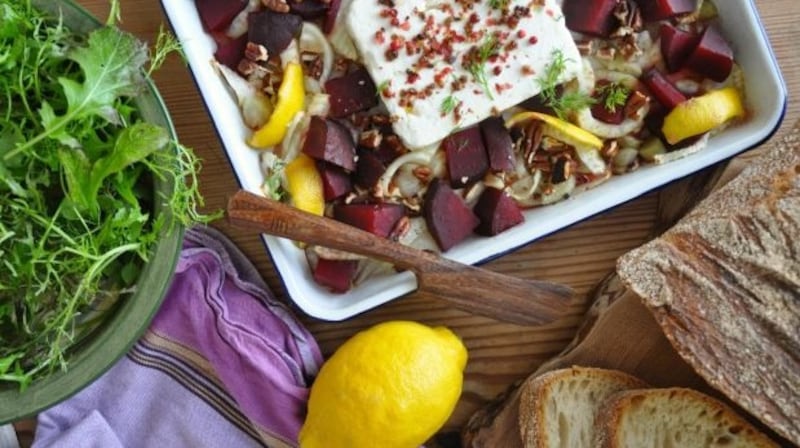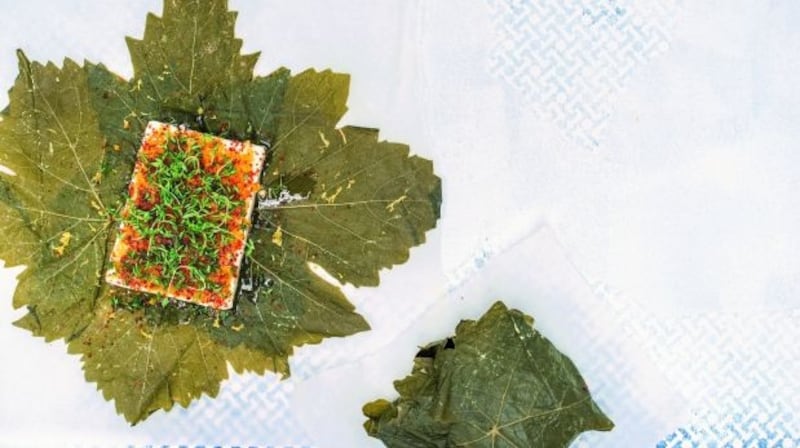The baked feta and tomato pasta video that exploded onto social media channels over the weekend has made the salty Greek cheese difficult to source, with some supermarkets completely selling out of stock.
The six-ingredient recipe involves baking a block of feta surrounded by whole cherry tomatoes, garlic, oregano and olive oil, then mashing everything together and adding cooked pasta, and some of the cooking water. A final flourish of basil leaves and you’ve got a creamy, salty, fragrant pasta dish in about 20 minutes.
The US culinary website Food52 tracked the recipe back to its originator, food blogger and artist Jenni Häyrinen, who posted it on her Instagram account back in 2019 and has watched it go viral on socia media a couple of times since then, most recently on TikTok.
In 2020 Häyrinen launched National Uunifetapasta (baked feta pasta) Day in Finland, urging the entire country to make the dish. Last week, she took the initiative global, fuelling the flurry of social media attention over the weekend.
There's just one thing Häyrinen isn't happy about as she sees her creation bounce around the internet once again: the most recent iteration doesn't include any chilli, something she believes is essential to the dish. Her original recipe is here.
The idea of baking a whole block of feta with tomatoes isn't exactly new here either. Last summer, Ross Lewis, chef proprietor of Michelin-starred Dublin restaurant Chapter One, shared his recipe for wine ripened tomato stew with feta, rocket and basil, as part of our Kitchen Cabinet series of recipes from chefs in lockdown.
Lewis serves his tomato and feta bake with grilled lamb, or adds courgettes and black olives to the mix for a vegetarian main course. He also recommends cooking the stew on a barbecue for an extra smoky hit of flavour.

Irish Times Magazine food writer Lilly Higgins suggests baking a whole block of feta with beetroot, fennel, lemon and pink peppercorns, as an alternative. Rather than mixing it with pasta, this is served with a loaf of crusty bread to dip into the cheese, with the vegetables as a sort of warm salad, dressed in the olive oil and balsamic vinegar that also goes into the baking dish.
For a fancier way with a block of feta, that is just as hands-off and simple once assembled, food writer Sabrina Ghayour dusts the cheese with lemon zest, chilli flakes and thyme and wraps it in vine leaves before baking it. "Once you have tried quivering, molten feta with a delicious combination of flavourings, you might never go back to eating feta any other way. If you really struggle to find vine leaves, don't worry – simply wrap up the cheese in some baking paper instead, much the way you would wrap a present. I like to serve these with flatbread," she says.

Can't find feta on the supermarket shelves? Here's what to do. The brined cheese, traditionally made from sheep's milk, but sometimes with goat's or cow's milk, or a mixture, has PDO (Protected Designation of Origin) status within the EU, meaning the name can only be applied to feta made in Greece.
However, you’ll find a number of feta alternatives, including Greek-style cheeses made by Irish artisan cheesemakers including St Tola and Ardsallagh Farmhouse Cheese. And the recipe will work with blocks sold as Greek-style salad cheese too, though they might not be as creamy when baked.
But if you can't get hold of any sort of feta, or if the fact that tomatoes are not in season bothers you, check out Galway chef Jess Murphy's version, made with roasted cubes of squash, Cashel Blue cheese and capers, topped with chopped walnuts, fresh parsley, dried chilli and a spoonful of mustard, with cooked spaghetti stirred through.



















